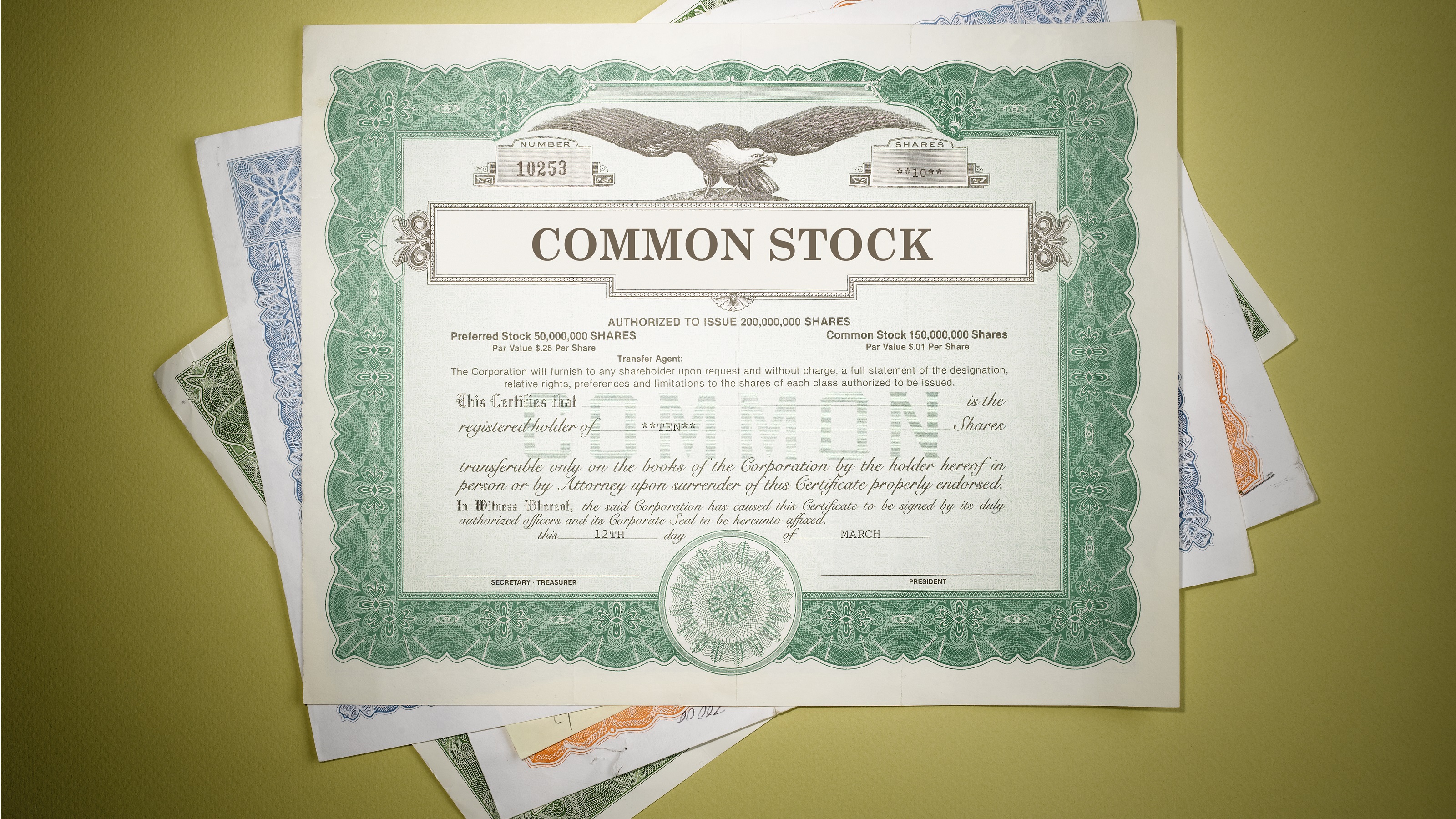Why Your Investments Must Change as You Age — and How to Do It
A retirement portfolio should balance growth and income. You need both.


Retirement planning has gone from fairly simple a few years ago to mind-bogglingly complex today. That means you must make investment decisions solid enough to provide income for many decades while remaining flexible enough to shift as your circumstances do.
It is a big change. “My grandparents had fixed pensions. They received the same amount of cash each month from the pension fund for the rest of their lives,” says Richard Rosso, director of financial planning at wealth management company RIA Advisors in Houston. The magic of managing the assets to make those payments possible was left to Wall Street. Now “the burden, more than ever, is on the individual,” he says.
If ensuring your assets last a lifetime sounds daunting, you are not alone. We asked a slew of finance experts to explain, in the simplest way possible, the most suitable allocations of stocks and bonds for your portfolio when you are in your 50s, 60s, 70s and beyond. These model portfolios are a guideline to managing investment risk according to your age and circumstances.

Sign up for Kiplinger’s Free E-Newsletters
Profit and prosper with the best of expert advice on investing, taxes, retirement, personal finance and more - straight to your e-mail.
Profit and prosper with the best of expert advice - straight to your e-mail.
Stocks and bonds together
A typical model portfolio consists of stocks and bonds, which have completely different performance characteristics. Over long periods, U.S. stocks have produced far better total returns (capital gains plus dividends) than fixed-income securities. From 1974 through to the end of last year, the S&P 500 index had average annualized returns of 11.1%, according to data from Barbara Friedberg Personal Finance. That compares to 8.5% for high quality-low risk corporate bonds, 4.3% for super-safe three-month T-bills, and 6.4% for 10-year T-notes.
Stocks, however, are riskier than bonds in the short term. During the first three years of the millennium, 2000, 2001, 2002, stocks registered losses of 9%, 12% and 22%, respectively. Stocks took another tumble in 2008, shedding 37%. The worst year for bonds was in 2022 when those securities rated BBB lost 15.5% in value, while long-dated Treasury Notes lost 29.3%.
And therein comes the balancing act that you as an investor need to deal with. When the time horizon before the money is needed is decades away, invest more heavily in stocks. When you need the money in years rather than decades, allocate a larger proportion of your assets to bonds. At least, that’s the theory.
Typically, financial advisers have a few starting points for an appropriate stocks-bonds portfolio mix depending on your age and your risk appetite.. These starting points are dubbed model portfolios, although almost all advisers will tell you they will custom design any investing strategy to reflect your goals and financial circumstances.
ETFs make it easier
When you are in your fifties, you should have 40% to 50% of the portfolio in stocks and the remainder, up to 60%, in bonds, says Rob Williams, managing partner and chief investment strategist at Sage Advisory, in Austin, Texas. Such a mix can be easily achieved using exchange-traded funds. Of course, you could alter these percentages to reflect a desire for more risk by adding stocks, or less risk by adding bonds.
You could easily get a 50-50 split by investing half your capital in SPDR S&P 500 ETF (SPY), which tracks the S&P 500 stock index, and the rest in a fund focused on high quality corporate bonds such as the iShares Broad USD Investment Grade Corporate Bond ETF (USIG) which tracks a basket of low risk fixed-income securities. There are many other similar ETFs and mutual funds suitable for individual investors regardless of whether they work with an adviser or by themselves.
Williams says the stocks-bonds mix shifts for those in their sixties to 40% stocks and 60% bonds. And for those people in their seventies and eighties, the starting point is 80% bonds and the remainder in stocks. Again, ETFs focused on equities and bonds can be used to build the portfolio without having to pick individual securities.
Managing risk
These model portfolios are only the starting points. Consider your financial goals and how much risk you can tolerate. The tolerance for handling market crashes is particularly important.
“Risk tolerance is what’s your inclination when the stock market drops,” explains Kurt Spieler, chief investment officer of wealth management at FNBO (formerly First National Bank of Omaha.) “If your inclination is to sell, then you should have more bonds and cash than you would otherwise.” Of course, when you aren’t inclined to sell or you want to buy more stocks when the market drops, then perhaps an increased equity allocation is in order.
Market crises don’t happen every year, but it would be unlikely that any investor will manage to avoid experiencing at least a few such events. From its peak in October 2007 to its trough in March 2009, the S&P 500 index dropped 56.8%. In the Covid-19 pandemic of early 2020 the S&P 500 lost 34% between February and March. Then from January 2022 through October the same index lost 25% as the Federal Reserve waged war on the inflationary surge by raising its benchmark short term target interest rate. The U.S. stock market has subsequently recovered and then gained further in every case.
The idea behind reducing the likely swings in a portfolio by adding bonds versus stocks is to help keep you invested. “The biggest thing to do is to stay invested in your portfolio allocation, whatever the asset allocation,” Spieler says. That’s because buying and selling positions is a common way to lose money. As the adage goes: “It’s time in the market that counts, not timing the market.”
Realistic spending
Your financial goals and your fiscal reality also have a role in determining a portfolio mix. Most people need to take a cold hard look at what is possible financially. “For higher returns, you need more equities,” Spieler says. Such a move could add a few percentage points of financial gains annually, which is then compounded.
However, aggressive investments have their limits. For instance, given that annual stock returns have averaged around 11% it is unlikely that a $100,000 portfolio will grow to $5 million over a single decade. The actual outcome would be less than $300,000. In other words, affording Lamborghini tastes requires a lot of capital.
Rethinking allocations
As most people age, they become more cautious, Spieler says. “Investor behavior changes. Client portfolios have the tendency to get more conservative in retirement.”
Typically, that means people reduce the portion of their portfolio that’s invested in stocks by around 10 percentage points each decade. Some clients feel they don’t have another decade for their portfolio to bounce back if there is a crash, says Spieler. That’s not without good reason. The decade from 2000 through 2009 produced losses for the S&P 500 including dividends. Anyone having experienced that so-called “lost decade” is more than likely to feel burned financially.
Any model portfolio has plenty of maneuverability for what gets picked as an investment. Let’s start with stocks. Equities don't all have the same risk. At the moment, a few ultra-large tech companies, including Nvidia, Apple and Microsoft are dominating the performance of the S&P 500, and yes, the index has done extremely well over the last year and a half.
But there’s a drawback: that dominance of less than 10 stocks in the index means you aren’t really diversified. How those few stocks move matters far more than does the performance of other stocks.
Stay diversified
If you want to keep more diversified, buy the equal weighted S&P 500, says Thomas Martin, senior portfolio manager, and partner at Globalt Investments. That equal-weighted index gives every member of the S&P 500 the same weighting, meaning that the smallest company gets the same representation as the largest one. In the year through June 19, the Invesco S&P 500 Equal Weight ETF (RSP), which tracks the S&P 500 equal weight index, is up 4.7%, excluding dividends.
Going to overseas markets in search of stocks might also appeal to some people. “I think having diversification into other countries is definitely a good idea,” Martin says. The price of stocks in Europe, like in many other non-U.S. markets, tends to be lower relative to company earnings than in America. What’s a good amount of overseas holdings? Between 10% and 30% of the stock allocation, he says.
Some wealthy people invest primarily in stocks, not because they are stock market thrill seekers, but because they want to leave a legacy to their families or other relatives. “Their time horizon is significantly longer than for many other people,” says FNBO’s Spieler.
There is also room for bonds outside the usual government Treasuries and high-quality corporates. For instance, high-yield fixed-income securities (a.k.a. junk bonds) and loans have certain advantages over other fixed income products, says Rob Williams, managing partner and chief investment strategist at Sage Advisory.
Junk bonds, such as those held in the SPDR Bloomberg High Yield Bond ETF (JNK), tend to have higher yields than high quality corporate bonds. They also typically have a shorter time to maturity, which makes them less price sensitive to changes in interest rates. In other words, they are less volatile. That category lost 12.2% in 2022, compared to a shocking loss of 27% for high grade corporate debt the same year.
Williams also points to loan funds, such as the SPDR Blackstone Senior Loan ETF (SRLN), which holds a basket of loans. They provide diversification for the overall bond allocation, he says. Bank loan funds typically make monthly payments to investors that tend to be higher than the rates on T-Bills. The risk profiles of loans and high-yield debt differ in technical ways. Those differences include how detailed are the so-called borrowing covenants, and that helps diversify a portfolio and make it less volatile.
But if you are covering all your fixed expenses with guaranteed income, such as Social Security, a pension or a private annuity, you could consider that akin to having the safety provided by a bond portfolio. “If that was the case, then I could possibly have 100% in stocks, and be more aggressive with my other investments,” Rossosays.
Some people, particularly those who are younger, are increasingly looking for guaranteed forms of income. That includes a renewed love for annuities and insurance products, Rosso says. Many people don’t think Social Security will be there when retirement time comes, but “I believe it has to be there,” he says.
Model portfolios can be tweaked to take account of your circumstances. However, there are also so-called target-date funds which automate the process of changing the investments as the years pass and you approach retirement age.
They have drawbacks, though. “Target date funds aren’t flexible,” says Jack Ablin, founding partner at wealth management company Cressett Capital. “You are essentially riding a bus that isn’t customizable at all.”
Other challenges are assumptions made about when you might retire. You might have thought about quitting work at 60, but may find you want, or need, to work longer. Target date funds were hurt in the last decade by ultra-low interest rates, but they now have better yields and valuations, Albin says. And they’re also better than not stashing any money aside for retirement.
How to hold your nerve in a financial crisis
The biggest challenge when investing is how to hold your nerve when the world seems to be falling apart and markets are collapsing. In general, we know what to do — sit tight and ride out the financial storm. But do we do it? Not so much.
A common response is to sell stock holdings. And when the market has calmed, usually with stock prices higher than at the depths of the crisis, investors buy stocks again. If you do that, you are selling low and buying high.
“Almost nobody does what they should,” says Steven Strazza, director of research at financial research company All Star Charts. The mental problem is the panic going on around you in the market when the indexes are dropping. “You have to ignore a lot of that.”
Avoiding TV that features finance news is a good start, says Art Hogan, chief market strategist at B. Riley Wealth, a wealth management company. “The average person should not be overly concerned about financial news,” he says. That’s because news directors are adept at highlighting allegedly imminent financial dangers that mostly don’t come true. In short, the TV, radio or newspapers can send some investors into a blind panic.
Despite the market crashes or corrections, stocks trend upwards over the decades, says Peter Earle, senior economist at the American Institute for Economic Research. “There’s a woefully underappreciated genius to, in financial upheaval, staying one’s hand,” he says. In other words, don’t sell your stocks in a panic.
Instead, it might be better to mimic Wall Street investment professionals such as Thomas Martin, senior portfolio manager, and partner at Globalt Investments in Atlanta. “When the market went down in 2022, I lost 35% of my money,” he says. “That would be disturbing to many people, but not to me because I knew it would come back up. I just didn’t know when.”
Of course, the S&P 500 did bounce back, gaining 26% including dividends in 2023, and then a further 16% this year through mid-June.
Note: This item first appeared in Kiplinger Retirement Report, our popular monthly periodical that covers key concerns of affluent older Americans who are retired or preparing for retirement. Subscribe for retirement advice that’s right on the money.
Related Content
Get Kiplinger Today newsletter — free
Profit and prosper with the best of Kiplinger's advice on investing, taxes, retirement, personal finance and much more. Delivered daily. Enter your email in the box and click Sign Me Up.

Simon Constable is co-author of The Wall Street Journal Guide to the 50 Economic Indicators That Really Matter.
-
 Stock Market Today: Stocks Gain on Tech, Auto Tariff Talk
Stock Market Today: Stocks Gain on Tech, Auto Tariff TalkThe Trump administration said late Friday that it will temporarily halt tariffs on some Chinese tech imports.
By Karee Venema Published
-
 Sam's Club Plans Aggressive Expansion: Discover Its New Locations
Sam's Club Plans Aggressive Expansion: Discover Its New LocationsSam's Club expansion plans will open up to 15 new stores each year. Learn where they plan to open in 2025.
By Sean Jackson Published
-
 Can a New Manager Cure Vanguard Health Care Fund?
Can a New Manager Cure Vanguard Health Care Fund?Vanguard Health Care Fund has assets of $40.5 billion but has been ailing in recent years. With a new manager in charge, what's the prognosis?
By Nellie S. Huang Published
-
 What Is a Medallion Stamp? The Requirement for Transferring Securities
What Is a Medallion Stamp? The Requirement for Transferring SecuritiesTransferring securities from one account to another often requires this extra step.
By Emma Patch Published
-
 How Dividend Reinvestments Work for Retirement
How Dividend Reinvestments Work for RetirementWant your retirement investments to keep growing? Here's what you should know about dividend reinvestment.
By Robert H. Yunich Published
-
 20 Ways to Clean Up Your Finances This Spring
20 Ways to Clean Up Your Finances This SpringSpring cleaning is therapeutic and stops costly problems from building up around the home. Why not tackle the dusty corners of your finances at the same time?
By Lisa Gerstner Published
-
 The Free-Lunch Strategy to Reduce Risk From Tech Stocks
The Free-Lunch Strategy to Reduce Risk From Tech StocksA recent rout in tech stocks has some investors thinking more defensively. This "free-lunch portfolio" strategy can help.
By Anne Kates Smith Published
-
 How to Survive Market Mayhem
How to Survive Market Mayhem2025 is turning out to be a turbulent year for the market, but don't panic. Here are four ways investors can ride out the storm.
By Jeffrey R. Kosnett Published
-
 4 Turnaround Stocks to Consider – and 2 More to Keep an Eye On
4 Turnaround Stocks to Consider – and 2 More to Keep an Eye OnA turnaround stock is a struggling company with a strong makeover plan that can pay off for intrepid investors.
By Nellie S. Huang Published
-
 Has This Unconventional Growth Fund Lost Its Mojo?
Has This Unconventional Growth Fund Lost Its Mojo?The Primecap Odyssey Growth Fund has lagged the broader S&P 500, but it still boasts a solid return and provides investors with diversification.
By Nellie S. Huang Published